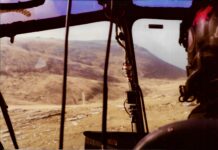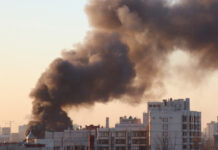
In this scenario a reporter witnesses a mass walkout of workers from a factory affected by industrial action. The company claims it’s business as usual; the union says all workers have downed tools.
You have been covering an ongoing industrial dispute at a local factory for more than six weeks. You attend a mass meeting of factory workers outside the plant.
The union claims all its 100,000 members were out on strike, but the employer says 50% turned up for work and defied the picket line.
You were reporting from the main gates of the steel plant all day and you didn’t see anyone crossing the picket line. You witnessed the mass meeting after which all those taking part left and walked away from the steel works.
You didn’t see any action inside the factory grounds. The staff car park, which is usually full, was virtually empty. It seemed clear to you that the factory was at a standstill with few people other than security staff and management on site.
So, the company says half the staff defied the strike action, but the trades union says all its members were on strike.
How do you report the situation?
Do you:
- Accept the union’s line and say that there was a 100% turn out for the strike.
- Accept the company’s line and say that 50% defied the strike call.
- Offer both versions and keep quiet about what you saw because it contradicts what has been said and could confuse the audience.
- Offer both versions, admit you can’t confirm which is right or wrong, but describe what you saw in detail.
Suggested action
It would probably be best to go with option 4 and offer both versions, admit you can’t confirm which is right or wrong, but describe what you saw in detail.
Why option four?
As a reporter all you can do is report what you have seen and what you have been told.
You can attribute comments to those who made them, and add your own eye witness account of events.
You should say what the union leaders and the steel plant owners say happened – it is not your role to edit their claims.
However you also have a responsibility to describe what you saw happening around you.
In this case you could report that all the workers you saw moved away from the plant after the mass meeting, and that all you could see behind the factory gates were a few security guards patrolling the premises.
You should not directly contradict either of the claims made by the opposing sides in the dispute.
And you should not report in such a way that suggests one side or the other is attempting to mislead the public.
However, by setting out the facts as accurately as possible you will be doing your job as a reporter, even if it is obvious that the versions offered by the management and union leaders can’t both be true.
To sum up, your journalism must be:
- well-sourced
- supported by strong evidence
- examined and tested
- clear and unambiguous.

Analysis:
- Conflicting narratives: The core issue is the stark contradiction between the union’s claim of a 100% strike and the company’s assertion of 50% worker attendance. This highlights the inherent bias and strategic communication often present in industrial disputes.
- Eyewitness account: The reporter’s direct observation is crucial. They witnessed a mass meeting followed by an exodus of workers, and a visibly closed factory with only security staff present. This directly challenges the company’s claim.
- Journalistic integrity: The scenario emphasises the ethical dilemma of reporting conflicting information while maintaining objectivity. The reporter must ensure that they report accurately, clearly, and fairly.
- The importance of context: Six weeks of ongoing industrial dispute provides a significant amount of context. This should be added to the report.
- The power of description: Describing the scene in detail allows the audience to draw their own conclusions. The visual of a mass meeting, a deserted factory, an almost empty staff car park, and only security personnel is powerful.
Issues:
Beyond simply stating the facts, a good reporter would:
- Seek further evidence:
- Attempt to verify the company’s claim of 50% attendance. Are there time-stamped security logs, employee swipe card data, or other forms of evidence?
- Seek clarification from the union on how they determined 100% participation. What methods were used?
- Attempt to contact individual workers to gain their personal perspective.
- Provide background:
- Briefly summarise the six-week history of the dispute.
- What are the key issues?
- What previous actions have been taken?
- Explore the implications:
- What are the potential consequences of this strike?
- How will it impact the local economy, consumers, and the workers themselves?
- Use visuals:
- If possible, include photographs or video footage of the mass meeting and the closed factory.
- Visual evidence can be very powerful.
- Consider the audience:
- Tailor the language and presentation to the audience.
- Explain complex concepts clearly and avoid jargon.
- Seek expert opinion:
- If possible, gain comment from a neutral third party such as an industrial relations expert.
Summary:
The scenario presents a classic case of conflicting narratives in an industrial dispute. The reporter’s ethical obligation is to present all sides while accurately reporting their own observations. The best approach is to:
- Clearly state the conflicting claims of the union and the company.
- Provide a detailed eyewitness account of the mass meeting and the closed factory.
- Acknowledge the inability to independently verify either claim.
- Add context by summarising the six week dispute.
- Seek further evidence to add clarity to the situation.
- Explore the implications of the strike.
- Use visuals if possible.
- Seek expert opinion from a neutral third party.
By adhering to these principles, the reporter can provide a fair and informative report that empowers the audience to make their own informed judgements.








